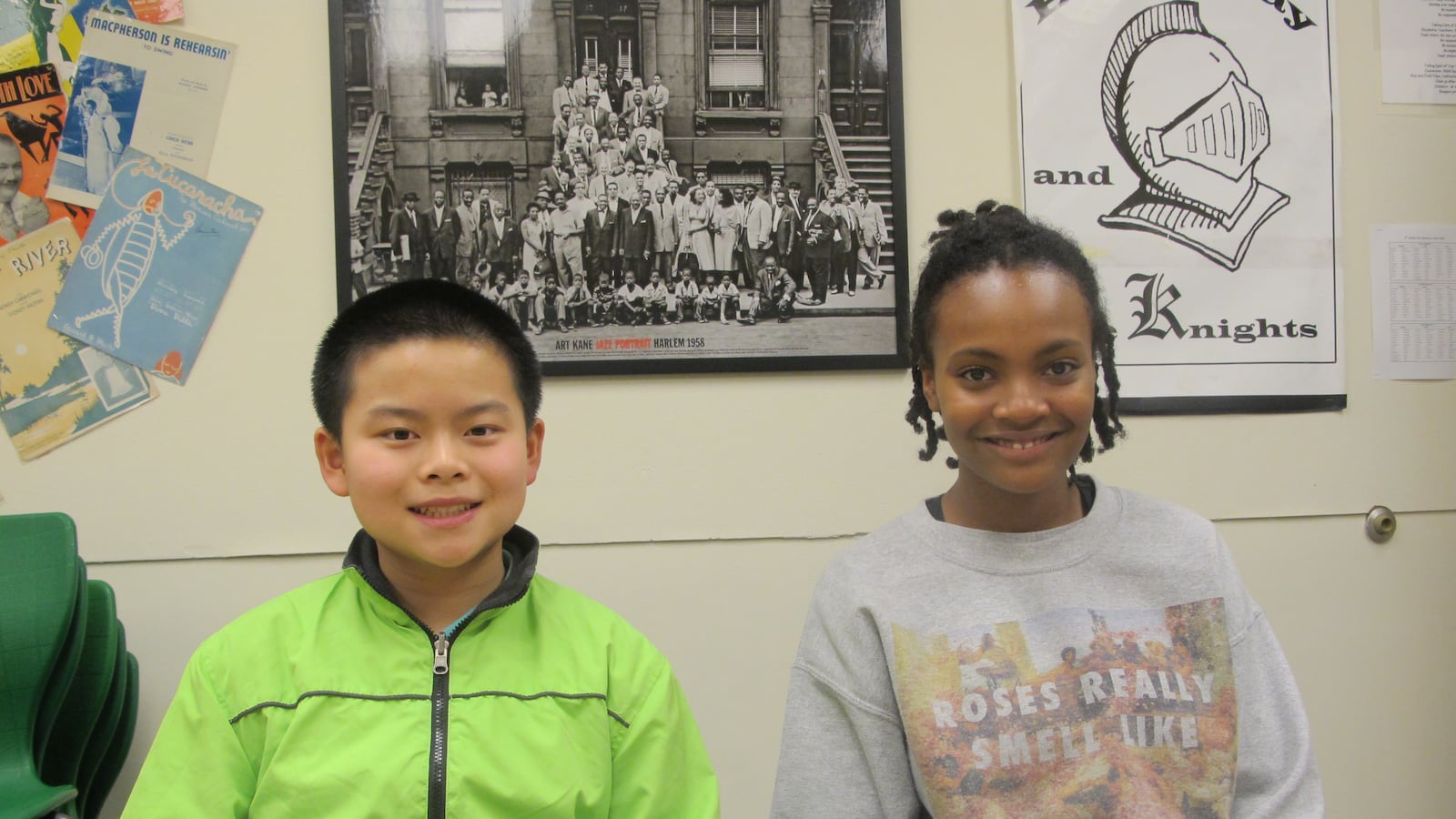Maya Holtham describes herself as a talkative girl. High school interviews, she thought, wouldn’t be a problem.
But when she got to Breakthrough New York — a program that helps high-achieving, low-income students get into and succeed at selective high schools and colleges — she learned she sometimes strays off-topic when facing questions.
“I kind of learned how to center it and give my idea precisely,” said the eighth-grader, who attends M.S. 260 in Manhattan.
Holtham’s lesson is a testament to the fact that getting into a selective high school in New York City can require following mostly unwritten directions that many low-income students don’t have access to. The city’s high school directory includes more than 100 schools that screen students, using tools such as interviews and writing samples.
“You’ve got this school application that at first glance, looks really simple and you could very easily think it’s a matter of filling out the application and you’re done,” said Maurice Frumkin, a former city education department official who now runs an admissions consultancy. “But it’s all the preparation and leg work and education that really can make the difference.”
Breakthrough tries to help close that knowledge gap, first by helping students sort through the 649-page high school directory. Then, Breakthrough staffers coach them on all of the other ways they can improve their chances for a coveted admissions slot at public and private schools alike, from basics like handshakes to more complicated strategies for advocating for oneself.
“Many of our kids end up taking the leap into a very elite, private space that their families haven’t necessarily had access to in the past,” said Natalie Cox, Breakthrough’s senior program director. “It’s not devaluing their comfort zone, it’s teaching them a set of strategies for how to navigate this new space that has new norms.”
STEP ONE: CHOOSING SCHOOLS
There are stark differences in the amount of support New York City students receive when completing a high school application.
Some have access to guidance counselors, parents who can take them on school tours, and a network of adults who understand how to identify schools that make sense for them. Others have overworked guidance counselors and no great ways to know which schools are best, Frumkin said. Those students can end up overwhelmed and in schools that aren’t a good fit.
Before finding Breakthrough, Ellis Wu, an eighth-grader who lives in East Harlem, thought there were only two kinds of high schools in New York: Stuyvesant and “bad” schools.
Now an eighth-grader at Manhattan’s New Explorations into Science, Technology and Math, a school that serves gifted students from across the city, Breakthrough helped him identify other top public schools with less name recognition and pushed him to consider a few prestigious boarding schools as well.
“Breakthrough just opened our eyes to these different schools,” he said.
THE NEXT STEPS
The city’s high-school choice process is designed to be straightforward: Students are told to list up to 12 schools on their application, then wait for an algorithm to match schools and students. Some schools are screened, which means they have discretion over which students are most likely to be accepted. Successful applicants to those schools often must take school-specific tests, participate in group activities, or submit writing samples.
The city approves schools’ admissions processes, and schools aren’t supposed to depart from them. Yet people with a close view into admissions processes say families frequently try to help students get their applications noticed with informal communication such as writing a letter or placing a phone call.
“There are even more unwritten kinds of things that families are doing, techniques they’re doing to advocate themselves,” Frumkin said.
Breakthrough helps fill these informal information gaps with a curriculum designed to give students “fluency in the language of power.” The program tells students about the mandatory open houses and deadlines they’re up against, then helps them perfect how they’ll present themselves in an interview with feedback about eye contact and body language.
To help one student with his eye on Manhattan’s prestigious Beacon High School, for example, Cox told him to call the school every morning for a week to make sure they paid attention to his application. He hasn’t got in yet, but he did land an interview. Ellis participated in a series of mock interviews and learned that he should talk more when questioned.
“A lot of middle-school students, they don’t know what to talk about — they’re very modest, and they feel like they haven’t accomplished anything,” Frumkin said. “A lot of it is getting them to understand that they have a lot to be proud of.”
Throughout the process, Breakthrough staff members tell students that this process is designed to give them a new set of tools, not to change the way they act or speak.
“We’re really explicit about it from the beginning, and that it can sometimes feel really defeating,” Cox said. “The whole focus of what we’re trying to do is equip them with a toolkit for when I walk into this space and I feel uncomfortable.”

